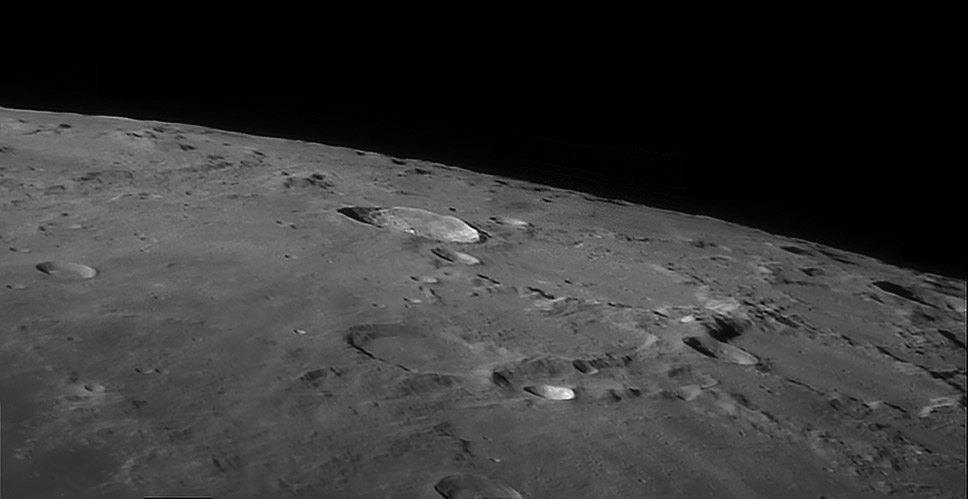
image by [1]Tony Gondola
Some pictures are better to enjoy than to interpret. Tony’s recent view of the area north of Plato and Mare Frigoris is like that. With relatively high Sun, its a plain area of subdued topography, shades of gray giving way to the blackness of space. But splat, right in the middle, is the sculpted out sharpness of Anaxagoras, a young, bright ray crater. The libration for this image pushes Anaxagoras near the limb, resulting in the delightful view of the summit of its bright central mountain just peeking above the near rim. This image has a grayness of tone that is different than I remember visually seeing here (but I haven’t observed for months). I remember a brighter terrain, with Anaxagoras being quite bright. What does it look like when you have observed it near this phase? A broader question is what should imagers strive for - a photometrically accurate depiction of tones, or an evocative and pleasing view? Perhaps they are the same? And since most LPOD images are not made under government contract, does it matter how imagers choose to process them?
Technical Details:
October 29, 2007. 10″ F/7.2 Newtonian, 3x barlow, no filter, DMK 21AF04;p 50 frame stacks from 2000 frame AVI files.
Related Links:
Rükl plate 4
Tony’s website
Now you can support LPOD when you buy ANY book from Amazon thru LPOD
COMMENTS?
Register, and click on the Discussion tab at the top of the page.



